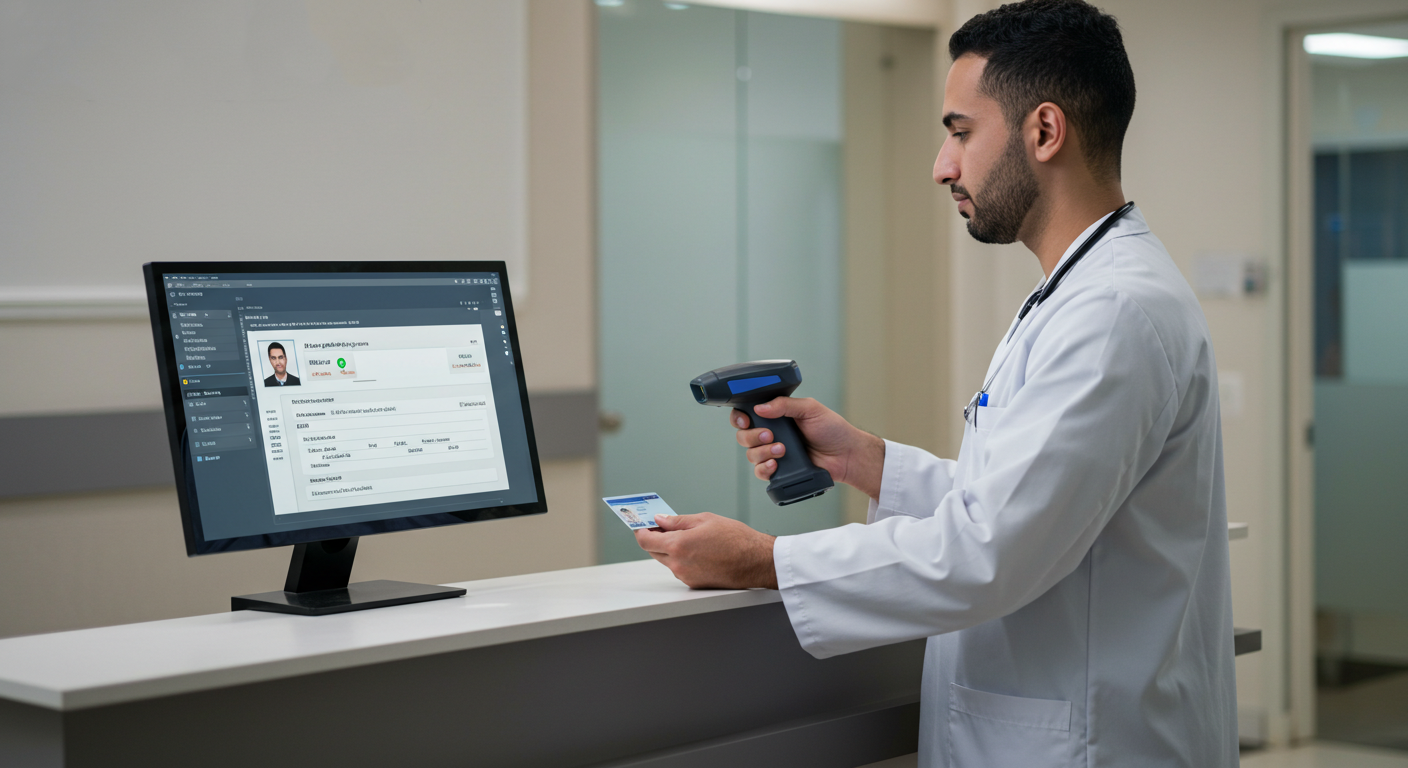Optical Character Recognition (OCR) Technology and Its Revolution in Hospital Management Systems
Optical Character Recognition (OCR) has revolutionized medical systems, especially Hospital Information Systems. By integrating OCR into systems like MYELIN, patient data can now be registered automatically and efficiently by simply scanning an ID card.

As the healthcare sector undergoes rapid digital transformation, the need for smart technologies that enhance efficiency and streamline administrative and medical processes becomes more essential than ever. One of the most impactful tools in this evolution is Optical Character Recognition (OCR) a technology that converts printed or scanned text into digital data that can be processed within systems.
OCR has played a pivotal role in advancing Hospital Information Systems (HIS) by enabling faster patient registration, automating data entry, and reducing human error.
A great example of its real-world application is the MYELIN system developed by CodeZone, which utilizes OCR to automatically extract patient information from scanned ID cards. This integration highlights how modern technologies can be leveraged to meet the growing demands of healthcare institutions.
What is OCR?
Optical Character Recognition (OCR) is an AI-based technology that converts handwritten, printed, or scanned text into digital data that can be read and processed by a computer. This technology is used to scan paper documents or images containing text and extract the content automatically, eliminating the need for manual data entry.
In the medical context, OCR technology helps accelerate patient registration, read test results, and digitize paper records, significantly enhancing efficiency within healthcare institutions.
The Role of OCR in Medical Systems and HIS
Integrating OCR technology into medical systems—especially Hospital Information Systems (HIS)—has become essential for optimizing workflow within healthcare institutions. OCR enables the automation of data entry from paper documents such as ID cards, medical reports, and lab results, converting them into digital information that is instantly and accurately stored in the system.
By leveraging OCR, reliance on manual data entry is greatly reduced, minimizing the risk of human error and speeding up patient-related processes, from registration to ongoing case management. It also allows healthcare providers to quickly access patient information without digging through paper files.
Benefits of Using OCR in Hospital Management
Using Optical Character Recognition (OCR) technology in hospital management is a critical step toward enhancing operational efficiency and delivering more accurate, timely healthcare. Below are the key benefits this technology offers:
- Faster Patient Registration: Instead of manually entering patient information, ID cards or insurance documents can be scanned, automatically populating the system with accurate data and reducing wait times at the reception desk.
- Reduced Human Error: Manual data entry often leads to mistakes such as incorrect names or ID numbers. OCR ensures accuracy by directly extracting data from official documents.
- Enhanced Patient Experience: By minimizing time spent on paperwork, patients enjoy a smoother, quicker onboarding process, increasing their confidence in the hospital's system.
- Efficient Document Archiving: Paper reports and medical records can be digitized and stored within the system, making retrieval easier and eliminating the need for physical storage.
- Accelerated Medical and Administrative Processes: With immediate access to patient data, doctors and staff can make faster, more informed decisions based on accurate and up-to-date information.
- Long-term Cost Savings: Reducing reliance on paper-based processes and physical storage lowers operational costs related to printing, filing, and maintaining physical archives.
- Improved Security and Data Protection: Digitally stored documents within secure systems reduce the risk of data loss or unauthorized access compared to physical records.
MYELIN by CodeZone: An Effective Model of OCR Integration in HIS
MYELIN, developed by CodeZone, is one of the leading Hospital Information Systems (HIS) that exemplifies the practical integration of OCR technology to enhance user experience and optimize healthcare workflows.
By embedding OCR into MYELIN, patient data can now be captured with exceptional speed and accuracy. For example, during a patient’s first visit, the receptionist can scan the national ID or insurance card, and the system will automatically extract relevant information—such as name, national ID number, date of birth, and address—and fill in the patient’s digital file without the need for manual entry.
- This integration brings several key advantages:
- Faster patient registration and reduced waiting times.
- Improved data accuracy, eliminating errors caused by manual typing.
- Enhanced operational efficiency within clinics and hospitals.
- A seamless digital experience for patients right from their first interaction.
Moreover, MYELIN is not limited to OCR. It is a comprehensive system that covers both administrative and medical functions, making it an ideal solution for institutions aiming to achieve smart digital transformation.
Conclusion
Optical Character Recognition (OCR) represents a major shift in how data is managed in the healthcare sector. It helps streamline processes, minimize errors, and enhance the overall patient experience. Its impact is especially evident when integrated with Hospital Information Systems (HIS), as seen in MYELIN by CodeZone a practical example of leveraging modern technology for improved efficiency and precision in healthcare management.
As artificial intelligence and machine learning technologies continue to advance, OCR is expected to play an even greater role in the digital transformation of the medical field, becoming a core component in building smarter and more integrated healthcare systems.


